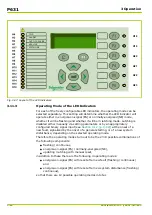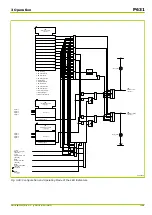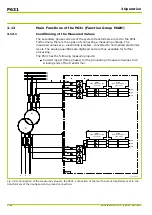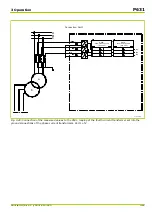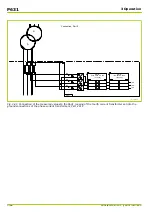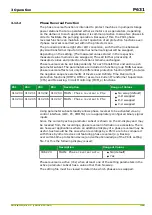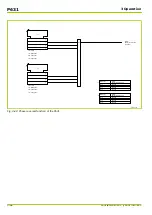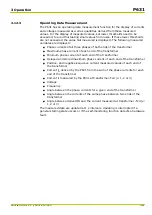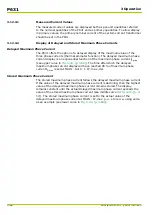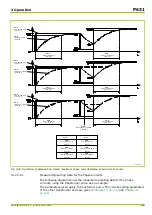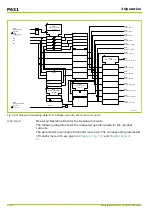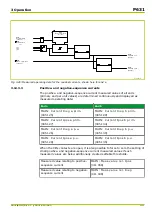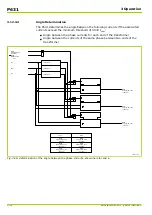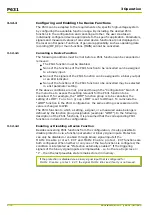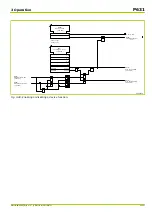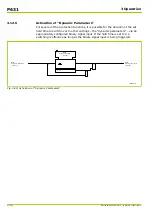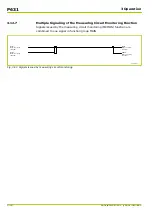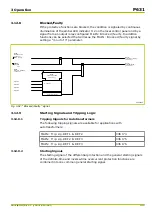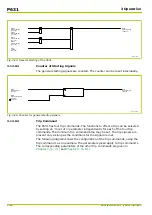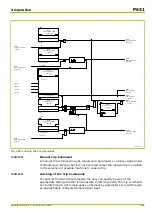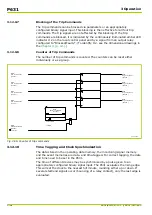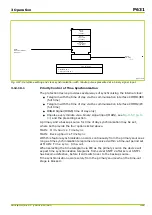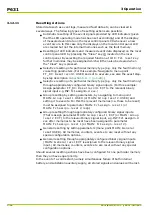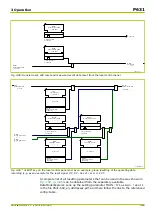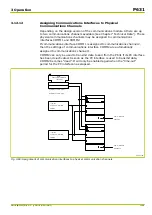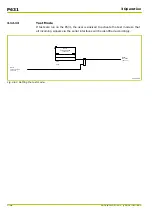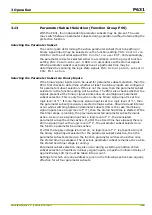
3.12.4
Configuring and Enabling the Device Functions
The P631 can be adapted to the requirements of a specific high-voltage system
by configuring the available function range. By including the desired P631
functions in the configuration and canceling all other, the user creates an
individually configured device appropriate to the specific application. Parameters,
signals and measured values of cancelled device functions are not displayed on
the local control panel. Functions of general applicability such as operating data
recording (OP_RC) or main functions (MAIN) cannot be cancelled.
3.12.4.1
Canceling a Device Function
The following conditions must be met before a P631 function can be cancelled or
removed:
●
The P631 function must be disabled.
●
None of the functions of the P631 function to be cancelled can be assigned
to a binary input.
●
None of the signals of the P631 function can be assigned to a binary output
or an LED indicator.
●
None of the functions of the P631 function to be cancelled may be selected
in a list parameter setting.
If the above conditions are met, proceed through the “Configuration” branch of
the menu tree to access the setting relevant for the P631 function to be
cancelled. If, for example, the “LIMIT” function group is to be cancelled, the
setting of LIMIT: Function group LIMIT is set to
Without
. To re-include the
“LIMIT” function in the P631 configuration, the same setting is accessed and its
value is changed to
With
.
The P631 function to which a setting, a signal, or a measured value belongs is
defined by the function group designation (example: “LIMIT”). In the following
description of the P631 functions, it is presumed that the corresponding P631
function is included in the configuration.
3.12.4.2
Enabling or Disabling a Device Function
Besides cancelling P631 functions from the configuration, it is also possible to
disable protection via a function parameter or binary signal inputs. Protection
can only be disabled or enabled through binary signal inputs if the
MAIN: Disable protect. EXT and MAIN: Enable protect. EXT functions are
both configured. When neither or only one of the two functions is configured, the
condition is interpreted as “Protection externally enabled”. If the triggering
signals of the binary signal inputs are implausible – i.e. both are at logic level =
“1” – then the last plausible state remains stored in memory.
If the protection is disabled via a binary signal input that is configured for
MAIN: Disable protect. EXT, the signal MAIN: Blocked/faulty is not issued.
P631
3 Operation
3-74
P631/EN M/R-11-C // P631-310-650
Summary of Contents for P631
Page 2: ......
Page 4: ......
Page 7: ...Changes after going to press...
Page 8: ......
Page 16: ...P631 Table of Contents 8 P631 EN M R 11 C P631 310 650...
Page 56: ...P631 2 Technical Data 2 28 P631 EN M R 11 C P631 310 650...
Page 236: ...P631 3 Operation 3 180 P631 EN M R 11 C P631 310 650...
Page 246: ...P631 4 Design 4 10 P631 EN M R 11 C P631 310 650...
Page 266: ...P631 5 Installation and Connection 5 20 P631 EN M R 11 C P631 310 650...
Page 276: ...6 8 Configurable Function Keys P631 6 Local Control HMI 6 10 P631 EN M R 11 C P631 310 650...
Page 548: ...P631 10 Commissioning 10 10 P631 EN M R 11 C P631 310 650...
Page 568: ...P631 12 Maintenance 12 8 P631 EN M R 11 C P631 310 650...
Page 570: ...P631 13 Storage 13 2 P631 EN M R 11 C P631 310 650...
Page 572: ...P631 14 Accessories and Spare Parts 14 2 P631 EN M R 11 C P631 310 650...
Page 576: ...P631 15 Order Information 15 4 P631 EN M R 11 C P631 310 650...
Page 582: ...P631 A2 Internal Signals A2 4 P631 EN M R 11 C P631 310 650...
Page 608: ...P631 A4 Telecontrol Interfaces A4 18 P631 EN M R 11 C P631 310 650...
Page 637: ......

